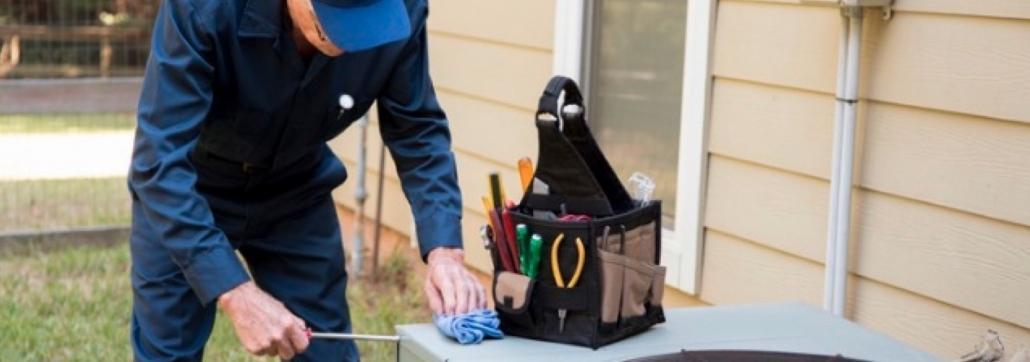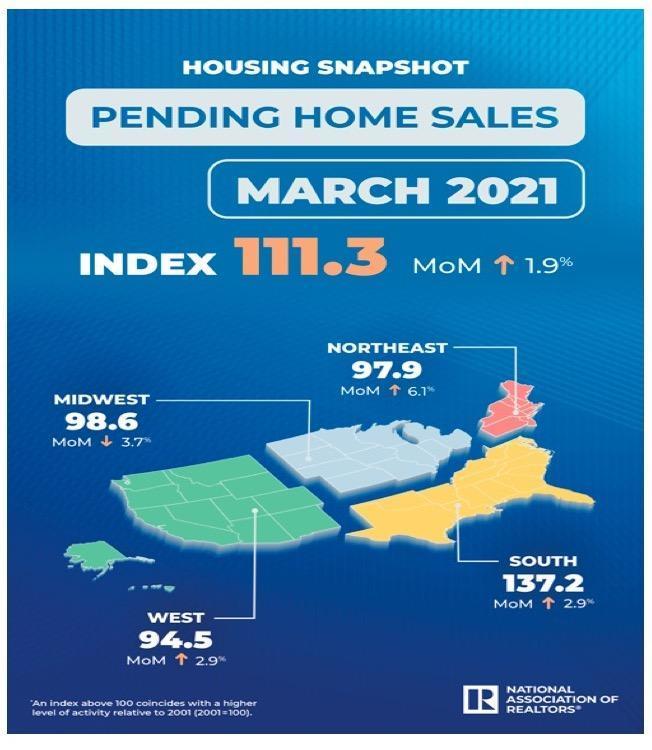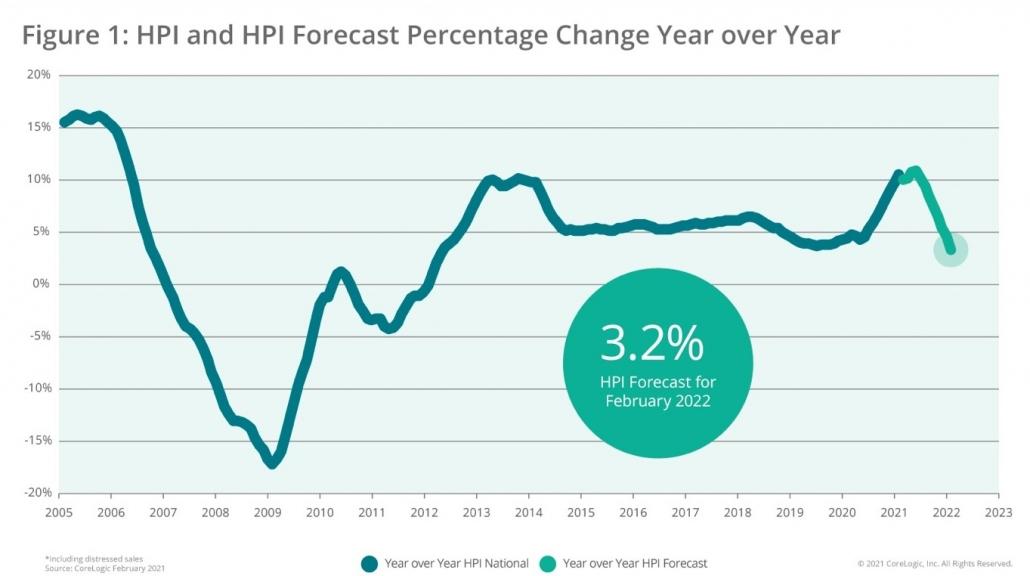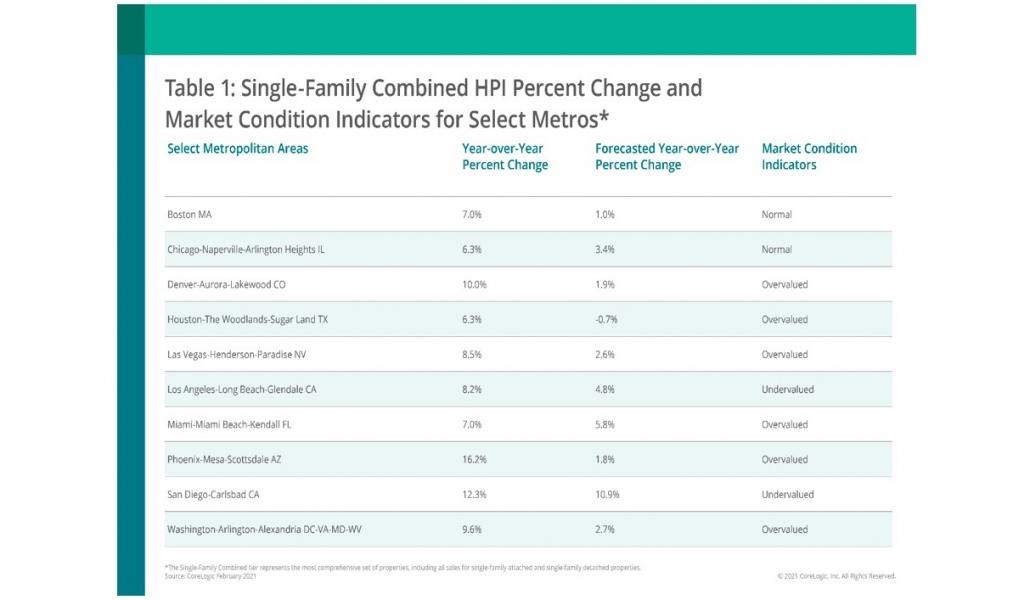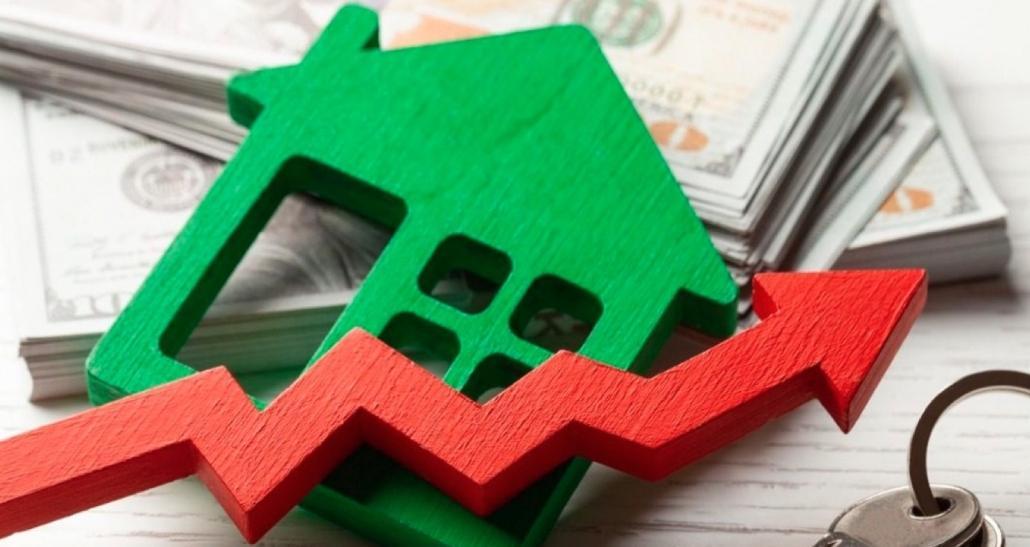As the lumber industry tries to meet the overwhelming demand for building materials, experts say the supply of homes has continued to dwindle under lagging new construction and rising price tags.
“We’re still amid major shortages across the country, where the lead time for people to get their lumber can be months instead of weeks,” says David Logan, director of Tax & Trade Policy Analysis at the National Association of Home Builders (NAHB).
Sales of newly built, single-family homes dropped by 18.2% in February, according to data by the U.S. Department of Housing and Urban Development and the U.S. Census Bureau. While winter storms served as a contributing factor, they were merely exacerbating the ongoing challenge builders face with surging costs for building materials.
According to NAHB, softwood lumber prices have reportedly tripled since last spring, resulting in increasing price tags for newly built homes. The organization reported the rise in lumber prices is adding about $24,000 to the construction cost of a new single-family home, creating a negative effect on affordability in the market and straining builders.
“The shortage continues, and part of that is due to the fact that housing demand is extremely strong due to demographic tailwinds and, in large part, to historically low mortgage rates,” Logan says.
Unforeseen Factors
It should come as no surprise that pandemic-induced business closures and lockdowns last spring are largely to blame for lumber shortages, according to Logan.
“There was kind of this confluence of terribly timed factors,” Logan says.
A large one was that lumber mills across the country overestimated the decline in housing demand during the pandemic’s early days. According to Logan, mills shut down for a period while others that kept producing curtailed capacity.
As a result, the unexpected surge in demand for building materials amid the 2020 remodeling boom and pandemic relief-induced wealth blindsided mills, according to Bryan Smalley, president of the Southeastern Lumber Manufacturers Association (SLMA).
“Most people have never seen this,” Smalley says. “It was one of those instances where you had two different industries—remodeling and home building—needing the same product at the same time.”
SLMA’s membership consists mainly of family-owned sawmills that produce Southern Yellow Pine used in hardwood flooring.
While their membership managed to produce more materials in 2020 than the year prior, Smalley says it wasn’t enough to match the demand.
To do that, Logan says mills are going to have to churn out more lumber.
That would also require mills to increase their labor force, according to Renee Hornsby, marketing and communications director for the National Hardwood Lumber Association.
“Loggers have to get back out there, but then you have wet periods and frozen periods and the normal slowdown of the industry, which is kind of what we all have just gone through,” she says, adding that some mills have struggled to increase their workforce because of COVID-19 restrictions.
The wood product manufacturing sector shed roughly 8,400 jobs from December 2019 to December 2020, according to U.S. labor statistics.
Hornsby also pointed out that boosted unemployment benefits that rival pre-pandemic wages have also added to the challenge of bringing back furloughed or laid-off mill workers.
“That’s a struggle there too for people in our industry,” she says. “Some people have gone on and decided to take other jobs and get out of the industry altogether because if you are unemployed for six months, you’ve got to find something to do.”
According to Logan, there was a sizable uptick in lumber production at the tail end of 2020 as companies claimed to ramp up operations as best as possible. However, it doesn’t appear to be enough to curtail price increases.
“There is plenty of supply of logs across the country, and really NAHB is full-throated in doing what it can to help the mills increase production as much as humanly possible,” he says.
Agents and Buyers Feel the Sting
High lumber prices and their effects on builders have trickled down to end consumers, according to real estate agents who say prospective buyers are feeling the strain of slower construction and growing competition.
“Right now, we have a crazy low inventory, so people are looking further outside of the city,” says Tim Aberle, real estate advisor at Denver-based Thrive Real Estate. “Oftentimes, new construction is a silver bullet where it’s a good combination of quality materials, no maintenance issues and [fair] price.”
Though it hasn’t slowed demand or absorption in his market, Aberle says there has been a shift in activity as builders’ prices have gone up substantially.
In some markets, agents say construction projects from last year have been delayed or canceled due to increased lumber costs.
“New construction is taking a very long time to build out right now,” says Nina Hollander, broker at Coldwell Banker Realty in Charlotte, North Carolina.
According to Hollander, several of her clients were driven to list their homes sooner than expected last year as prices for new builds started to surge. In other cases, she says projects that were already in the works had been delayed or postponed for similar reasons.
“Builders are building in a pretty extensive timeline from the get-go to ensure that what they need to complete the house is there in their hands to do it,” Hollander says. “It’s a different market than it was [before the pandemic]. I remember when houses were in new construction, and they were going up in four to five months. Right now, you have to plan seven to eight months.”
The number of homes on the market decreased by 52% in March compared to the same period last year—534,000 fewer homes—according to a recent realtor.com® report.
Austin, Texas, topped the list of inventory declines, shedding 72.7% of the number of homes the market had last year.
According to Austin-based Agent Cederick Harris, competition for limited lots is comparable to bidding wars for existing-home sales.
“We see that builders are basically in multiple-offer situations,” he says, adding that some in his market have begun waiting lists for projects.
“But after you’re on the waiting list there is still no guarantee because there is no price disclosure,” he says. “I’ve seen prices go up at least $100,000 in the last year. I’ve [also] seen in the last two months at least a $40,000 increase.”
“Housing starts are not enough to meet the demand for housing based on household formation and replacement for houses lost to demolition, damage or conversions,” says Gay Cororaton, senior economist and director of Housing and Commercial Research at the National Association of REALTORS® (NAR).
Housing starts dropped by 10.3% in February to a seasonally adjusted annual rate of 1.42 million after hitting 1.7 million in December, according to recent Commerce Department reports.
Despite the decline, Cororaton says the outlook for higher supply in the future is positive, citing the Biden administration’s push to build up the country’s infrastructure as a factor.
“NAR expects housing construction to continue to improve steadily, though not by leaps and bounds in the coming months as the constraints to housing production cannot be solved overnight—such as increasing construction labor and addressing zoning regulations to increase the available land for residential construction, including manufactured housing,” Cororaton says.
Jordan Grice is RISMedia’s associate online editor. Email him your real estate news ideas to jgrice@rismedia.com.

